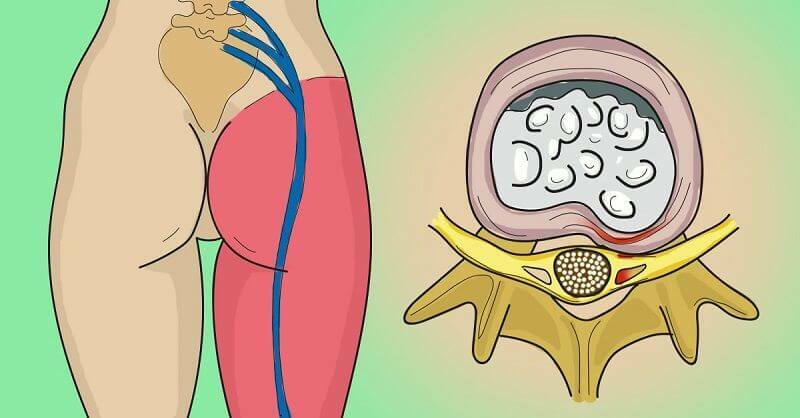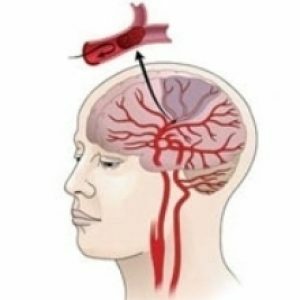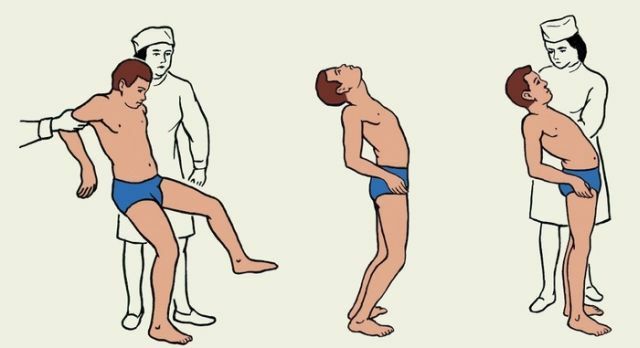Kearns-Sayre syndrome: what it is, symptoms and treatment
Content
- What is Kearns-Sayre Syndrome?
- Causes
- Symptoms
- Diagnostics
- Treatment
- Forecast
What is Kearns-Sayre Syndrome?

Kearns-Sayre Syndrome Kearns-Sayre syndrome, abbreviated KSS) is a rare neuromuscular disorder that usually begins before the age of 20. The disorder is the result of abnormalities in the DNA of mitochondria - small rod-like structures found in every cell in the body that produce energy that controls cellular functions.
Mitochondrial diseases are correlated with specific DNA mutations that cause problems in many organs and tissues of the body. Kearns-Sayre syndrome is characterized by progressive limitation of eye movement to complete immobility, accompanied by drooping of the eyelid (see. Photo). The pathology is also associated with the abnormal accumulation of pigmented material on the membrane lining the eyes.
Additional symptoms may include skeletal muscle weakness, heart block (heart conduction defect), low growth, hearing loss, inability to coordinate voluntary movements (ataxia), impaired cognitive function, and diabetes. Attacks are infrequent. Certain endocrine disorders can also be associated with KSS.
Causes
It appears that most cases of Kearns-Sayre syndrome result from a new spontaneous deletion of a large amount of genetic material found in Mitochondrial DNA (mtDNA). Mitochondria, which are found in hundreds of cells in the body, especially muscle and nerve tissue, carry blueprints for regulating energy production. Unlike the genetic instructions of cell chromosomes (autosomal DNA) that are found in the nucleus of every cell, mitochondrial genetic instructions are outside the cytoplasm in the cell nucleus.
In extremely rare cases, these deletions in mitochondrial genetic material can be inherited from the mother. The genetic instructions for mitochondria (mtDNA) found in sperm are usually destroyed during fertilization. As a result, human mtDNA is believed to be derived from the mother. An affected mother can pass the mutation on to all of her children, but only daughters, not sons, will pass the mutation on to their children.
Both normal and mutated mtDNA can exist in the same cell, and this situation is known as heteroplasmy. The number of defective mitochondria may be greater than the number of normal mitochondria. Symptoms of Kearns-Sayre syndrome may not appear in any given generation until a significant portion of the mitochondria is affected by the deletion. Uneven distribution of normal and mutant mtDNA in different tissues can affect different organs in members of the same family. This can lead to various symptoms in the affected family members.
Read also:Aicardi syndrome
Symptoms

The three main features of KSS are progressive paralysis of certain ocular muscles (chronic progressive external ophthalmoplegia); abnormal accumulation of colored (pigmented) material on the nerve-rich membrane lining the eyes (pigmented atypical retinitis), leading to chronic inflammation, progressive degeneration and depletion of certain structures of the eye (pigmentary degeneration retina); and heart disease (cardiomyopathy) such as heart block. Symptoms of this disorder usually appear before the age of 20.
In most cases, the first physical characteristic of this disorder is growth retardation. In addition, lowering of the upper eyelid (ptosis) due to weakness in one of the eyelid muscles is also observed in early childhood. Other muscles involved in coordinating eye movements may then be affected, gradually becoming weaker and eventually paralyzing certain eye movements.
Eventually, muscle weakness can spread to other parts of the face, throat (pharynx), neck and / or shoulders. Muscle weakness in these areas can interfere with speaking and / or swallowing (dysphagia). As the disease progresses, the upper arms and legs may be affected, resulting in progressive impairment of coordinated movement (ataxia) and / or staggering or intermittent gait (titubation).

Most people with Kearns-Sayre syndrome will also have vision problems due to the abnormal accumulation of colored (pigmented) material on the thin membrane that lines the eyes (pigmented atypical retinitis) and progressive degeneration of certain areas of the eye (pigmented degeneration retina). This degenerative process can ultimately affect the optic nerve (optic atrophy), layers of membranes behind the retina (choroid) and / or on the hard, white outer covering of the eyeball (sclera).
In some cases, victims may also experience night blindness; rapid involuntary eye movements (nystagmus); and decreased visual acuity. In rare cases, abnormal clouding of the anterior part of the eyeball (cornea) can also contribute to nystagmus and decreased visual acuity.
Read also:Spina bifida
The third primary finding in people with this syndrome is interference with the transmission of nerve impulses (conduction) that control the activity of the heart muscle (heart block). The severity of such conduction disturbances can vary in different ways among affected individuals.
In rare cases, KSS can also be associated with other disorders or conditions, including lack of certain reflexes, renal abnormalities, and / or peripheral neuropathy.
Peripheral neuropathy Is a rare condition that can affect one or more nerves in the body, causing pain and weakness. Peripheral neuropathy can affect sensory, motor, reflex, or blood vessel function.
Diagnostics
The diagnosis of KSS can be suspected when three main characteristics associated with the disorder arise in conjunction with each other. These include paralysis of certain eye muscles (chronic progressive external ophthalmoplegia), abnormal coloration of a thin membrane, lining the eye (atypical retinitis pigmentosa) and other changes in the structures of the eye (retinal pigmentary degeneration) and disease lesions hearts (cardiomyopathy), especially conduction disorders (eg, heart block). The diagnosis of Kearns-Sayre syndrome can be confirmed by careful clinical evaluation and various specialized tests.
Such specialized tests may include an electrocardiogram to detect and assess the severity of heart block, blood and cerebrospinal fluid lactic acid levels, muscle biopsies, to demonstrate the presence of characteristic abnormalities in muscle tissue (torn red fibers), and / or the spine, to determine if there are elevated levels of certain proteins in the spinal cord liquids.
A muscle biopsy can detect the presence of removed mtDNA, which is usually not found in a blood sample. In some cases of KSS, levels of other substances (eg, serum creatine kinase, blood lactate, gamma globulin, and / or pyruvate) may be elevated in the blood.
Microscopic examination of biopsy tissue samples under an electron microscope can reveal a large number of abnormal mitochondria in skeletal and ocular muscle tissue. In some cases, computed tomography can be used to look for abnormal calcium build-up and / or lesions affecting specific areas of the brain.
Read also:Dorsopathy: what is it, symptoms, causes, diagnosis, treatment of dorsopathy and prognosis
Treatment
Currently, there is no effective treatment for mitochondrial disorders in Kearns-Sayre syndrome. Treatment is usually symptomatic and supportive. Symptom management includes several specialties depending on the organs affected.
The most important is regular and long-term follow-up by cardiologists. Heart impulse problems such as heart block can be treated with a pacemaker. Other consultations may include audiology, ophthalmology, endocrinology, neurology, and neuropsychiatry.
Endocrinological disorders (for example, diabetes or hypoparathyroidism) can be treated with medication. In some cases, treatment may include hormone replacement therapy. Other treatments will depend on your specific conditions.
Surgery can be used to correct vision problems; in some cases, whether surgery helps improve vision often depends on how far the retinal changes have progressed. Various devices can help improve visual impairment in affected people. The particular devices and / or surgical techniques used will depend on the severity and specific combination of the visual impairment present.
Genetic counseling can be beneficial for affected individuals and their families. A team approach for children with this disorder can also be helpful and may include special social support and other health services, including physical and occupational therapy.
Forecast
Kearns-Sayre syndrome is a slowly progressive disorder. The prognosis for people with this syndrome varies depending on the severity and number of organs involved. Early diagnosis and a periodic electrocardiogram (ECG) are important because heart block can cause death in 20 percent of patients. Early implantation of a pacemaker can be of great benefit and prolong life for many patients.



